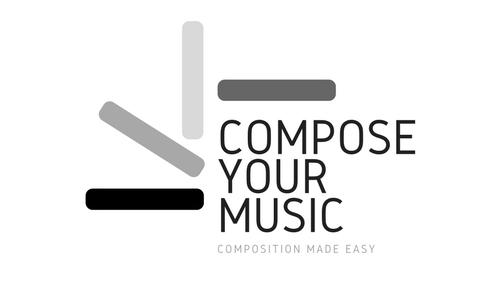Back to: Musical Analysis Course
Main Symbols of Analysis
In discussing the Shape, specific symbols are needed to clarify the form in a hierarchic framework.
The main objective is to abstract and simplify the original complexities to gain instructive overviews.
The general framework of symbols can be summarised like this:
1.- Main functions that indicate chief Growth functions:
O – Introductory material, or primitive version of other functions.
P – Primary materials
T – Transitional or other episodic, unstable functions.
S – Secondary or Contrasting functions
K – Closing, articulative functions.
If there are two or more themes of the same function, the appropriate numbers should precede the function, for example: 1P. 2P, 3P (in this case, we have three different primary themes)
If there are two transitional themes, we will designate them as 1T and 2 T.
Same thing with two secondary themes: 1S, 2S.
2.- Less definitive functions:
N – New material occurring after the expositional phase of P, T and S. For example: unrelated material appearing in the development section on a Sonata form. It can also be episodic material in a rondo, or new material in a recapitulation or re-exposition.
Q – Questionable functions. Too ambiguous in character to justify a more precise symbol.
() or <> – Parentheses indicate the original source of an idea:
S (P) represents a secondary theme derived from a primary theme.
This symbol or derivation is also used like so:
K (2S>P) refers to a closing theme based on a secondary theme derived in turn from the initial primary material.
3.- Component elements within a thematic function may be indicated by modifying with lower-case letters:
Ph – Harmonic, textural accompaniment aspects of a primary theme; in symbolising variants and derivatives it is useful to show the specific origin of the material. For example: 1S (Ph) describes a secondary theme derived from the accompaniment of the primary section.
r – Rhythm of a theme: this provides a common need to isolate the rhythm aspect of a theme from other elements. (For example: recurrent rhythmic motive) In this way, 1Pr can indicate the primary material’s rhythm, and 1Sa(1Pr) shows that the first sub-phrase of the secondary theme derives from the rhythm of the primary theme.
/P – A slash preceding any symbol indicates the location in the lower part of the texture. Another symbol is/P/which it symbolises that the primary material is embedded in the middle of the texture; thus 1S/Pr refers to a secondary theme with lower parts based on a primary rhythm.
4. Mixed functions:
The ambivalent nature of some themes that it might be found in the borderline between secondary and closing sections, for example, could be represented by mixing two symbols: SK; this can be found in themes in the early Classical period, in which the form was not fully developed.
5.- Subfunctions
Where Growth analysis requires more detailed symbols than those of the main thematic functions, single melodic phrases can be symbolised by attaching letters “a” up to “g” to the main functions such as Pa, Pb, Sa, Sb, etc.
For differentiation phrases, we can use the letters, v, w, x. y and z. producing the following combinations: Pax, Pbz.
This can serve as an example:
Main function: 1P
Component phrases: 1Pa, 1Pb, 1Pc, 1Pd.
Subphrases: 1Pax, 1Paz
Motives: 1M, 2M
Johann Sebastian Bach: Brandenburg Concerto No.1

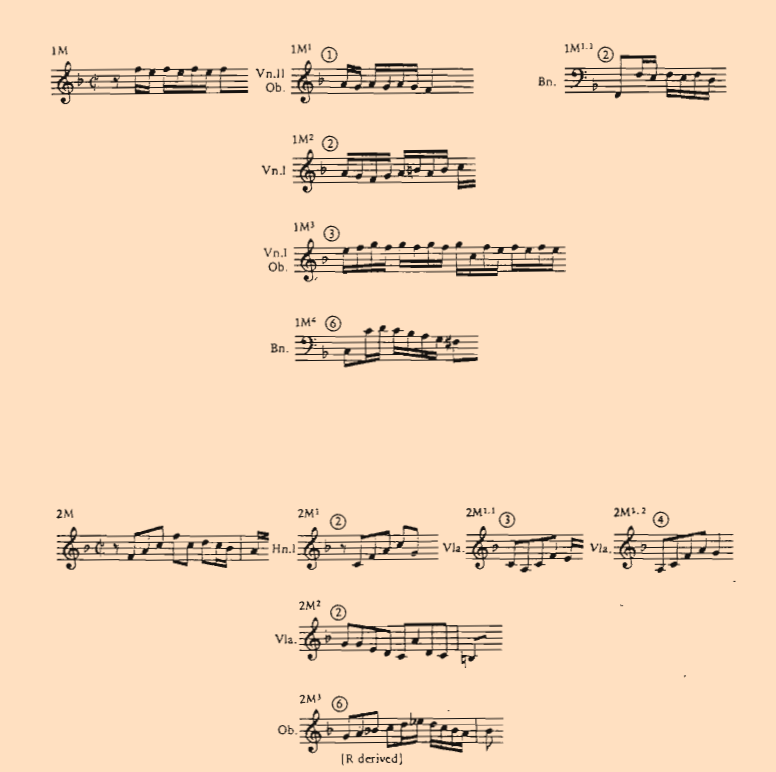
Examples of Analysis
Within the style-analytical approach, we can give use to a two-level timeline on which thematic symbols occur in their chronological positions, on an upper line parallel to a second level it contains the chord rhythm, with the chief harmonic and tonal events appearing underneath.
This graph should be an attempt to approximate the relative articulative strengths of vertical division marks.
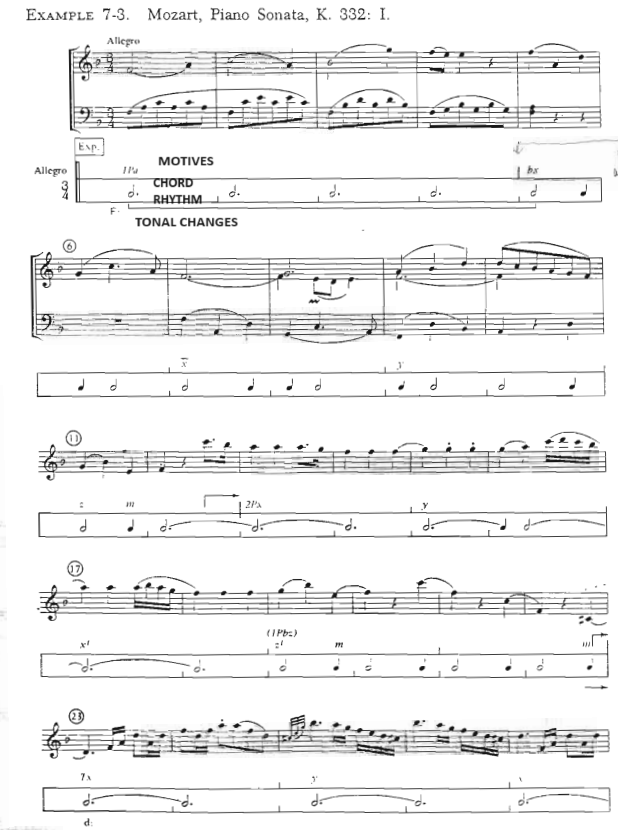
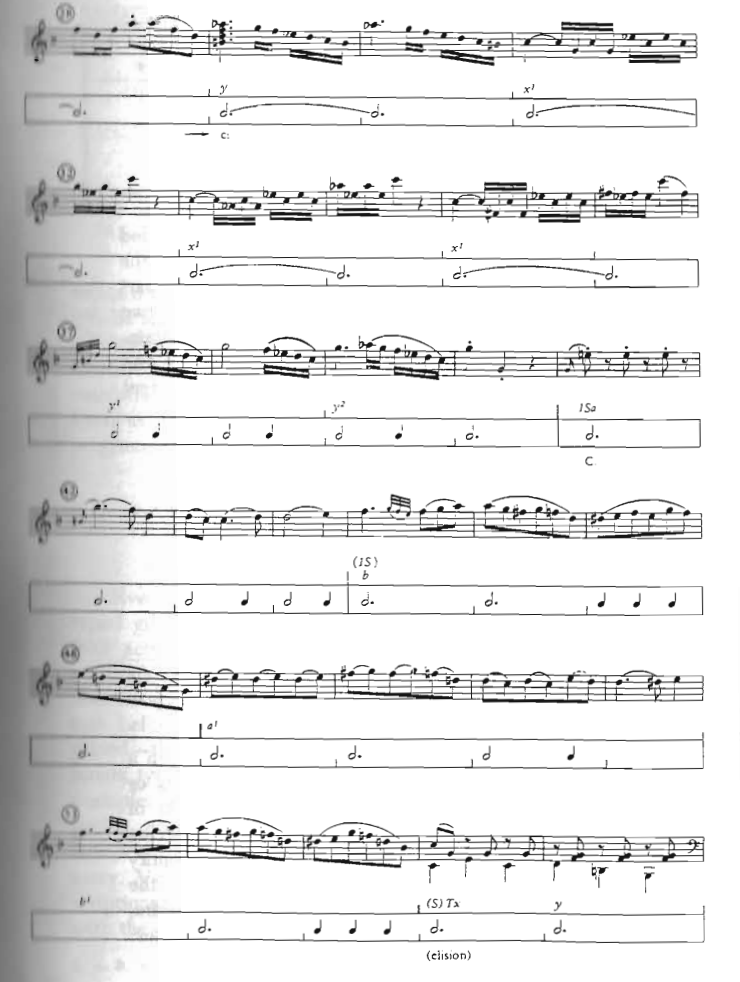
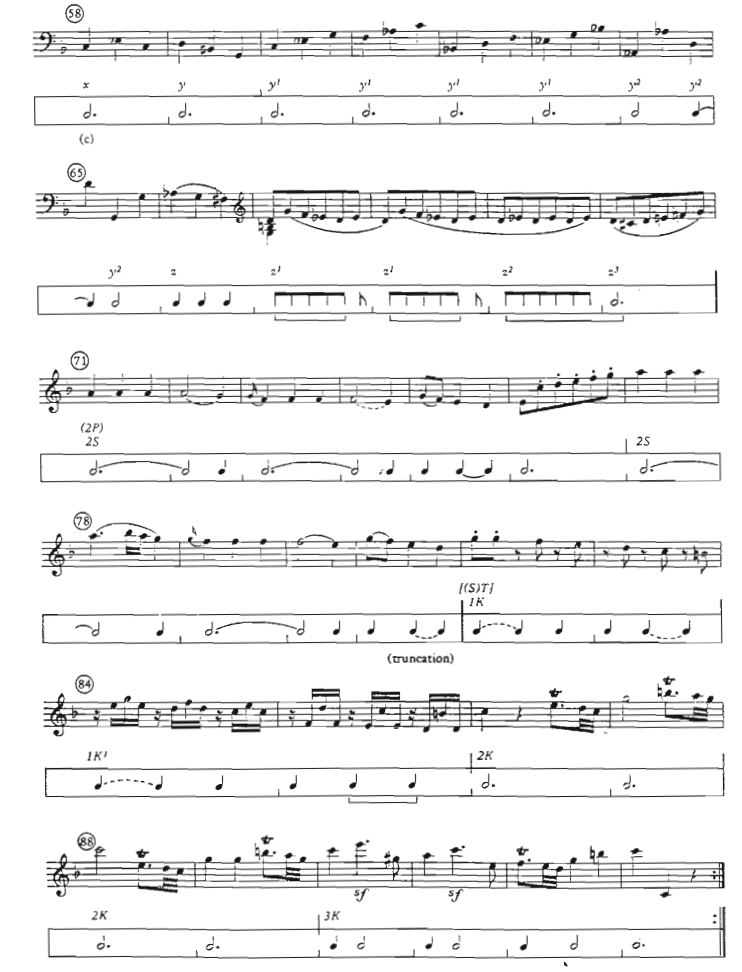
Upbeats and other overlapping articulations
All vertical articulations should coincide with the bar marks on the lower level of the timeline, ignoring upbeats, rests, or similar details
Where upbeats and overlaps appear sufficiently characteristic of a style to warrant the representation on the timeline, brackets with dotted lines make a suitable graphic record:
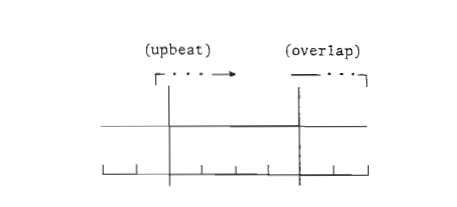
Additional lines
Where details of fabric are important, additional lines can be added above the basic timeline. This can be very useful in analysing a Fugue, in which we might schematise the texture, symbolising two parts in the upper line and two parts in the lower parts, with the basic lower line containing the barring, bar numbers harmonic rhythm, modulations and chord changes.
This could be represented as follows:
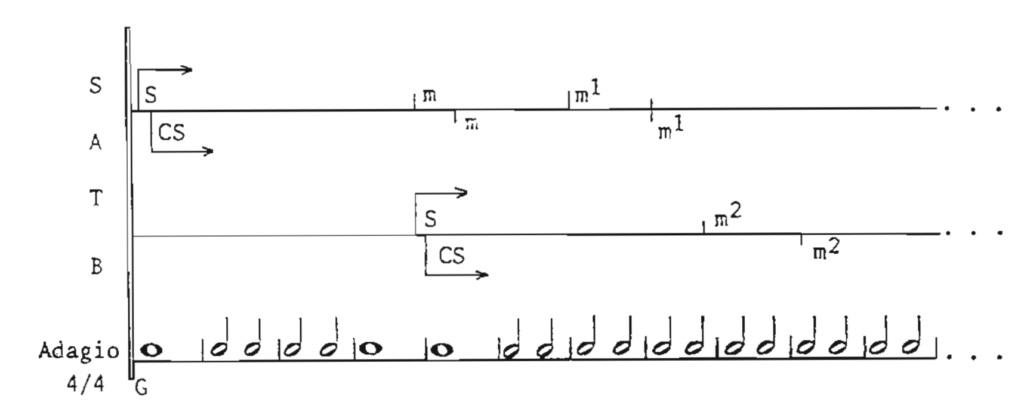
Added upper lines can also be used to map exchanges between a soloist (or solo group) and an accompanying orchestra, chorus, or other tutti combination.
For example, in the first movement of Mozart’s Piano Concerto in E flat, K. 271, the opening dialogue occurs in reverse order in the recapitulation. By using an asterisk to identify material introduced by the soloist, we can trace the migration of ideas from solo to orchestra, while the asterisk reminds us of the original source of the themes:
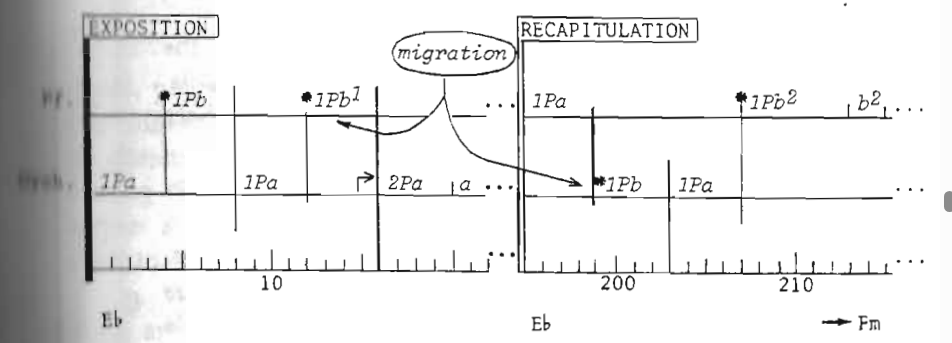
For this purpose, the timeline system, with its detailed hierarchy of thematic functions displayed on a consistent time scale, provides an ideal reference structure to which all other analyses and comments can be related.
Used as a core structure, the timeline device thus simplifies the programming of correlations between diverse other phenomena
STEREOTYPES OF SHAPE
Although the stereotypes of shape seldom appear exactly as they are represented, they do offer not only sound initial hypotheses of how a design may grow but also useful general categories within which to collect designs that share important large-scale features.
The stereotypes of the shape below all represent enlargements and a combination of the standard options of continuation.
Variation form, for example, simply treats an initial thematic sentence to a succession of alterations or transformations (often surface-rhythmic), each consistently applied to the whole sentence.
Fugue form consists mainly of contrapuntal variations following a conventionalised exposition, although there may be some recurrences and some contrast areas.
Two and three-part forms combine areas of variation, contrast, and recurrence, while the rondo form simply multiplies alternating procedures into a chain of returns and contrasts.
The Sonata form which particularly in its concert subtype reaches the greatest organisational complexity of any stereotype, necessarily calls upon many types of continuation in highly evolved versions, such as in expositions, developments and recapitulations, but also in highly specialised interior relationships as well.
During the tonal period (1680-1900) the melody and the harmony tend to control the standard options of continuation: we more easily identify recurrences by melodic and harmonic similarity.
The gradual dissolution of tonality at the end of the 19th century tended to return all stylistic elements to a condition of approximate equality: no single element or combination of one or two could any longer serve as a recognised basis for formal organisation.
